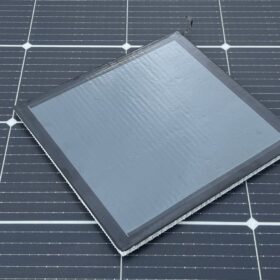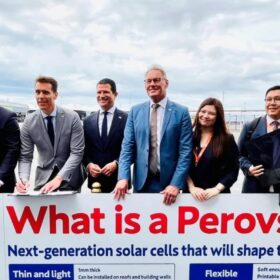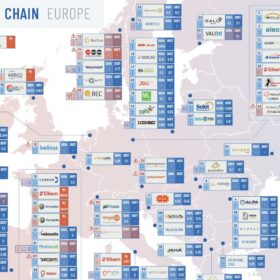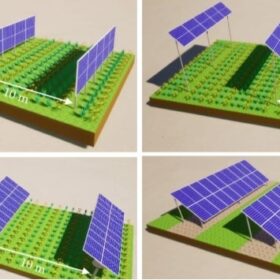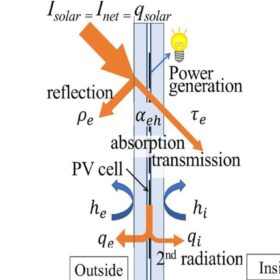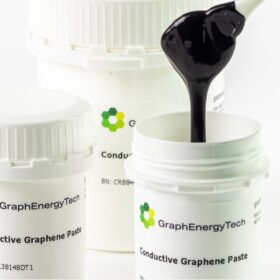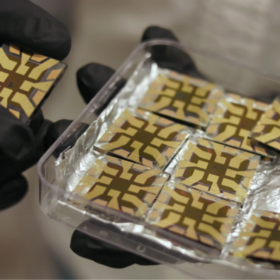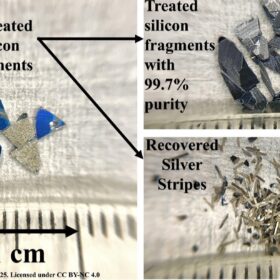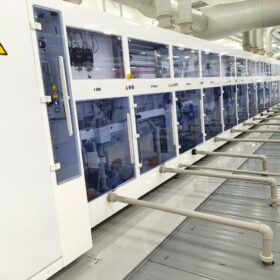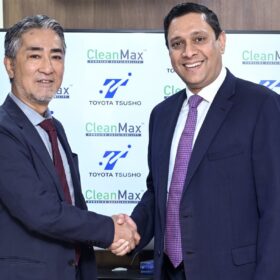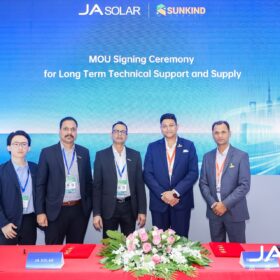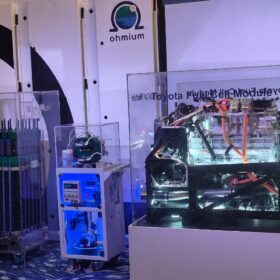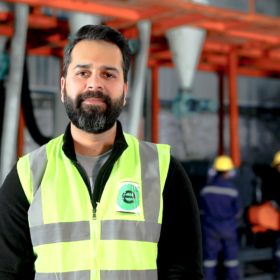Sinovoltaics tracks 86.5 GW of module output capacity for Southeast Asia
PV module manufacturing capacity in Southeast Asia has reached 86.5 GW across 61 active sites, according to Hong Kong-based quality assurance firm Sinovoltaics. The figures come from the company’s latest “Southeast Asia Solar Supply Chain Map” report.
TNO, Solarge unveil lightweight perovskite solar module prototype
TNO and Solarge have developed a lightweight perovskite solar module prototype measuring 32 cm x 34 cm by combining roll-to-roll processing and low-weight panel materials. The Netherlands-based partners aim to scale the technology for broader commercial applications.
Sekisui, TNO exploring perovskite solar PV collaboration
Japan’s Sekisui Solar Film and the Netherlands’ TNO have signed a letter of intent to explore collaborations related to flexible perovskite solar PV. Talks will be initiated on a potential perovskite module factory in Brabant and the exchange of relevant information.
Sinovoltaics updates solar module supply chain map for Europe
The latest report from the technical compliance and quality assurance company added several new producers but also noted several plant closures acorss the region. It said the current nameplate capacity for the region stands at 21 GW for modules, 3.2 GW for cells, and 1.5 GW for ingots.
All agrivoltaic system designs at a glance
Researchers in Sweden and Italy analyzed the economics of one-axis, vertical, and elevated PV systems for agrivoltaic applications, finding that overhead agrivoltaic systems may perform better the further south they are installed. The discounted payback period and levelized cost of electricity were also calculated and compared.
Fraunhofer ISE streamlines use of epitaxial wafers in TOPCon solar cell manufacturing
Researchers at the German research institute have demonstrated that the so-called EpiWafers could be used directly for solar cell fabrication without needing a pre-gettering step. Their experiments provide a proof of principle* for epitaxially grown silicon wafers from German wafer manufacturer NexWafe GmbH.
Enhancing PV glazing prospects in solar architecture
To make it easier to adopt building integrated PV (BIPV) as a glazing material, a group within the IEA Photovoltaic Power Systems Programme (IEA-PVPS) has tackled the solar heat gain coefficient (SHGC) calculation for BIPV. It is part of IEA PVPS Task 15 international standardization efforts.
Replacing silver in PV manufacturing with new graphene electrode technology
Swiss-British university spinoff, GraphEnergyTech, is developing graphene electrode technology to replace silver and other metals traditionally used in solar cell manufacturing
Titanium makes perovskite solar cells more durable
After finding a way to make spiro-OMeTAD, a popular perovskite solar cell hole transport layer, less prone to heat-induced crystallization, researchers at Georgia Institute of Technology are now seeking partners to scale the technology for large-area PV cells.
UNSW develops PV panel recycling method that recovers cell metals for upcycling
UNSW researchers were able to recover silicon from end of life solar PV panels pure enough for re-use in silicon carbide-based devices. Their novel multi-step method which includes thermal and chemical processes, also recovers silver.

